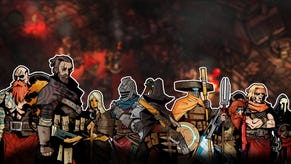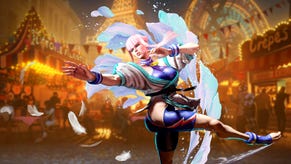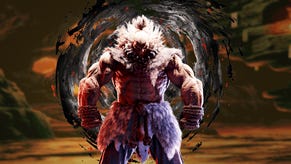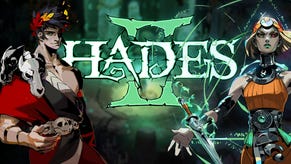The 10 Greatest Metroidvania Games
Everyone's talking about "metroidvania" games these days, but which ones are best? We make our picks. How do your favorites stack up?
This article first appeared on USgamer, a partner publication of VG247. Some content, such as this article, has been migrated to VG247 for posterity after USgamer's closure - but it has not been edited or further vetted by the VG247 team.
Long-time Castlevania series producer Koji Igarashi emerged from his crypt last week to announce his departure from Konami and discuss the development of Castlevania: Symphony of the Night. In the process, he also legitimized the term "metroidvania," for better or worse, mainly as a matter of pragmatism.
Love the term or hate it, at the very least we can all admit it serves a very handy purpose in providing a loose definition for a subgenre: Games that, like Metroid and the latter-day Castlevanias, revolve around non-linear exploration, acquiring permanent power-ups, and advancing into the adventure with the help of the tool and weapon upgrades you collect along the way. It's definitely a more elegant term than "roguelikelike." As the premier works in the genre, Castlevania and Metroid set the standard for everything that followed. Perhaps not surprisingly, they dominate this list as well.
We informally polled the USgamer staff, contributors, and readers to name their favorite metroidvania-style games, and here are the results. While none of these entries should be terribly surprising – again, more than half of them are Metroid and Castlevania titles – they're a great starting point for venturing into this cult subgenre. A remarkable number of indie games pattern themselves in the metroidvania mold, and with Igarashi working on his own venture, that doesn't seem likely to change anytime soon.

1. Super Metroid
Nintendo | Super NES | 1994
No big surprise that Nintendo's Super Metroid came in on top – it basically created the template for this style of game in one exquisite swoop. Nearly every moment of this 16-bit adventure is pitch-perfect, from the moody opening to the explosive finale. Super Metroid draws you forward in subtle ways, revealing its secrets one at a time, gradually giving you more and more freedom as the world opens up, until you truly feel like you're lost in the depths of an alien world. Despite the game's massive sprawl, the designers thought carefully about the map's interlocking structure and took the time to fill the tunnels and caverns with tiny details and unique features that made each room feel like a distinct, living place. One of the greats.

2. Castlevania: Symphony of the Night
Konami | PlayStation | 1997
Coming in just barely behind Super Metroid, Castlevania: Symphony of the Night brought Metroid-like structure and Zelda-inspired mechanics to the Castlevania universe. At once a bold reinvention of the series and a tender love letter to its past, Symphony dared remove the whip-wielding Belmont clan from the mix in order to present an adventure in which dhampir protagonist Alucard, son of Dracula, unraveled the chaotic innards of his father's castle by collecting magical relics, acquiring ever more impressive weaponry, and gaining experience levels. Loaded with detail and crammed with secrets, Symphony was at once a technological relic and a beloved masterpiece of game design.

3. Cave Story
Studio Pixel | PC | 2004
While it doesn't play exactly like Metroid or Castlevania, that's a major part of this legendary indie game's appeal. Cave Story incorporates the spirit of its inspirations – which encompass a number of classics – to become something at once new yet familiar. It's not only a great game, though. It also served as a demonstration of what one man could create with a little time and a lot of affection for video games. With its own unique systems and secrets, Cave Story dropped players into a massive interconnected world rendered in simple but charming graphics and left them to sort things out on their own. In doing so, it helped spark a revolution of independent game design.

4. Metroid: Zero Mission
Nintendo | Game Boy Advance | 2004
The original NES Metroid was quite a momentous creation... but it was also far more ambitious than the hardware, tech, and design of its era could properly handle. Zero Mission rectifies those shortcomings, revisiting the classic game and bringing it up to contemporary standards. Combining the design of Super Metroid, the mechanics of Metroid Fusion, and the brisk pace and overall structure of Metroid, this really does feel like the culmination of the series in many ways. It doesn't just lean on the past, though; Zero Mission introduces plenty of new elements, from bizarre outsized insects living in the caverns of Zebes to the mysteries of Chozodia. We may never see a true, classic Metroid sequel again, but there are worse swan songs for a franchise to go out on than this masterpiece of a remake.

5. Guacamelee
Drinkbox Studios | Various | 2013
Combining the design discipline of Super Metroid with Mesoamerican folklore and the elbow drops of Mexican luchadores, this stylish indie action game made quite an impression on players. Despite being less than a year old, it's already earned sufficient regard for players to place it on par with the established classics of metroidvania-style design. And why not? Its unique style and setting distinguish it from the usual video game clichés, and it livens up traditional genre mechanics like double jumps with unique wrestling-inspired moves and cooperative play. A fast-paced and frequently challenging adventure, Guacamelee serves as a welcome demonstration that not all metroidvania-type games have to be so literal about the Metroid and 'Vania elements.

6. Castlevania: Aria & Dawn of Sorrow
Konami | GBA | 2003
Konami | DS | 2005
As two parts of a whole, the adventures of Soma Cruz tweaked the Castlevania formula even more than Symphony of the Night. Casting players as the (spoilers!) reincarnated soul of Dracula determined to prevent his own return to chaotic evil alignment, the Sorrow titles set a new standard for nonlinear action on portable systems. And, of course, being designed for portable systems, they also embraced the trends of Nintendo's handhelds with lots of Pokémon-like collection. Rather than capturing monsters, though, Soma simply gathered their souls, extending his abilities as a warrior by gaining dominance over the creatures of Dracula's castle. With excellent level design, ridiculously deep and flexible play mechanics, and secrets aplenty, this pair of adventures gave gamers new respect for portable gaming.

7. Shadow Complex
Chair | Xbox 360 | 2009
Before Chair created Infinity Blade and discovered the breezy riches of iOS publishing, they brought the world this little gem of 2.5D game design. Shadow Complex took its overall design and structural clues from Super Metroid, but this was no tepid clone; perhaps because it ran on the trendy Unreal Engine 3, it incorporated similarly trendy features. Like, say, cover-based shooting and right-stick aiming. Shadow Complex's hybrid nature made for a comfortable yet occasionally surprising experience, with backtracking and skill-based map unlocks augmented by dramatic changes – the portion where you return to an area of the eponymous complex that's been flooded in the wake of a massive explosion feels eerie and seems more like something out of a Metal Gear game than a 2D platformer. Chair keeps promising a sequel; we can't wait.

8. La-Mulana
NIGORO | PC | 2005
Hearkening back to games in the really old 8-bit style, La-Mulana references Metroid less than it does obscure Japan-only games from the MSX computer platform. The original PC version of La-Mulana even looked like an MSX game! And much like those oldies, it's unrelentingly difficult and unapologetically obscure. Combining hardcore exploratory platforming action with complex puzzles, La-Mulana is easily the most demanding game on this list. You will take careful notes and connect seemingly unrelated dots for features linked across the span of the world map, or you will never get anywhere. Developer NIGORO seems to relish the reputation La-Mulana has earned and has promised the recently Kickstarted sequel will be even more lethal.

9. Metroid Fusion
Nintendo | Game Boy Advance | 2002
No follow-up to Super Metroid could ever have lived up to that classic's reputation and the nostalgia that had built up around it amidst nearly a decade of radical upheavals in game design, so Nintendo wisely didn't try out-Super-Metroid-ing Super Metroid with its sequel. Instead, they sidestepped it, introducing a stronger and more direct narrative that frequently exposed the man behind the curtain of the series' approach to design, as it were. Many fans reject the game's more explicit limitations and boundaries, but it makes for an interesting alternate take on the action: A more directed adventure with exploratory sequences built around smaller, self-contained regions. Add to that the menace of being stalked by Samus' super-powered clone and a sense of "breaking out" of the prescribed limitations of the world (a trick Portal would later use to equally excellent effect) and you have a controversial but still top-notch take on the Metroid concept.

10. Wonder Boy in Monster World
Westone/Sega | Genesis | 1991
Predating Super Metroid by a few years, Wonder Boy's fifth adventure instead took clues from 8-bit predecessors like Zelda II and, of course, its own predecessor, The Dragon's Trap. Set in a sprawling kingdom dotted with villages and dungeons, Wonder Boy in Monster World feels for all the world like a classic RPG hammered into the shape of a platform action game. Our hero enjoys the usual powers (melee weapons, magical spells) while also benefitting from the accompaniment of tagalong characters to help him along the way. Though you rarely hear the Wonder Boy series discussed much these days, excellent entries like Monster World make it ripe for rediscovery by fans of classic action games with a little extra substance to them.








